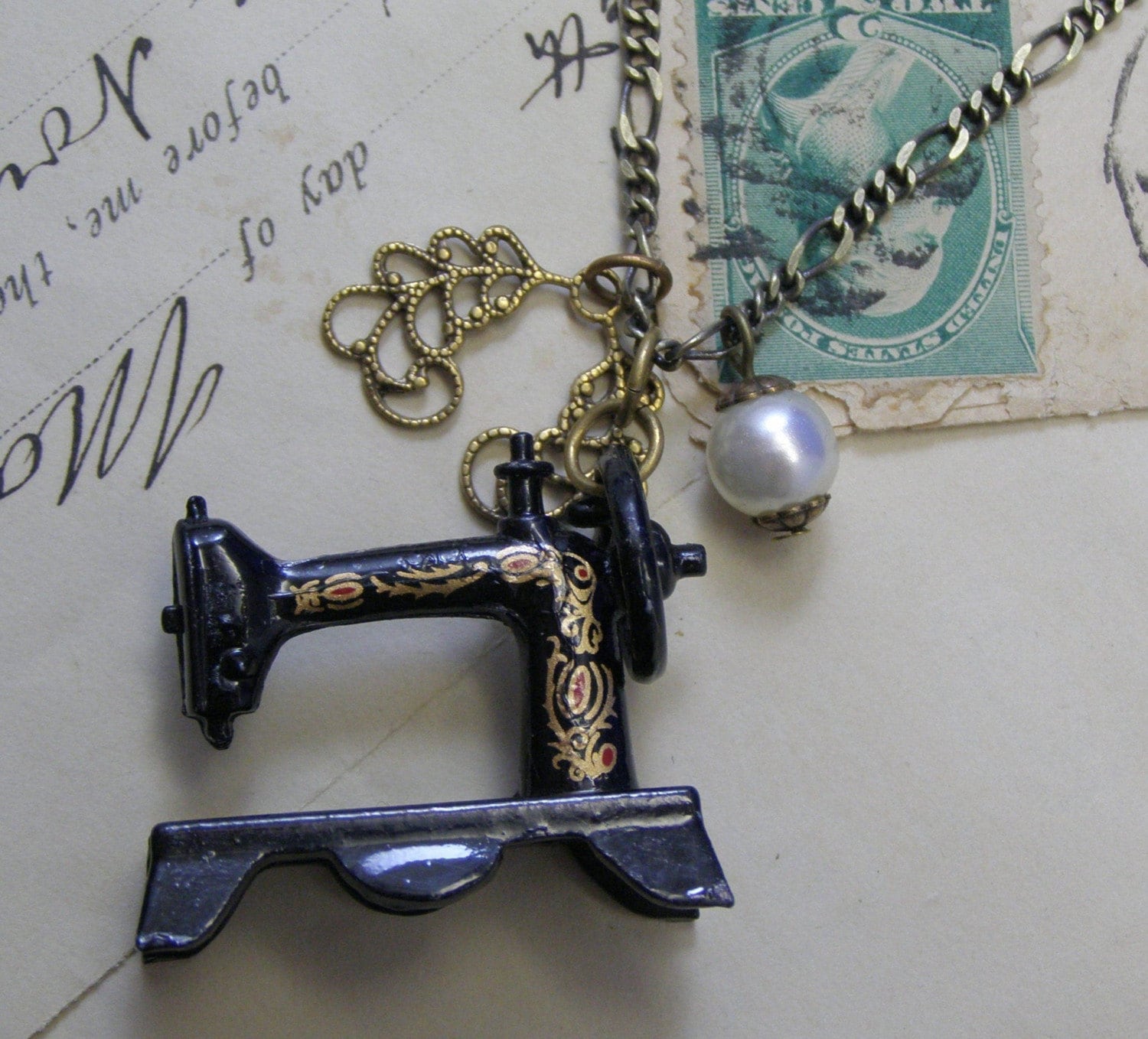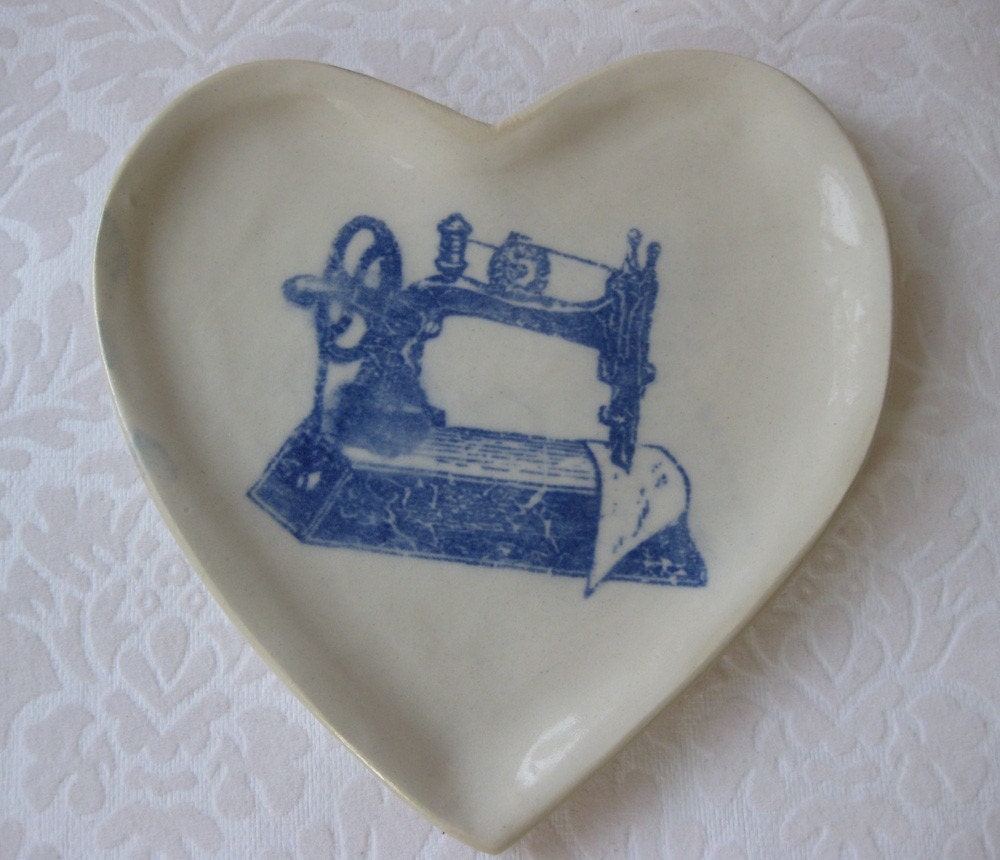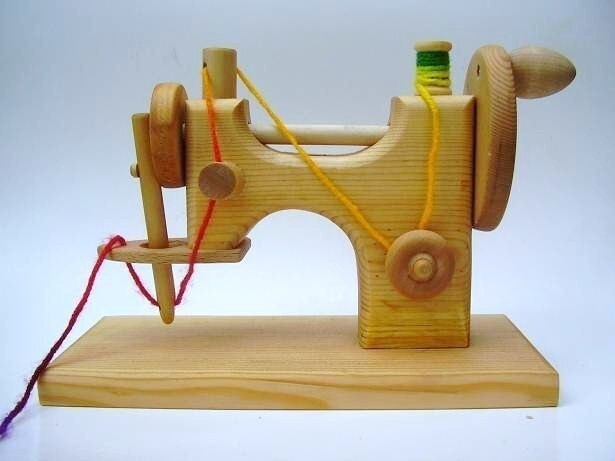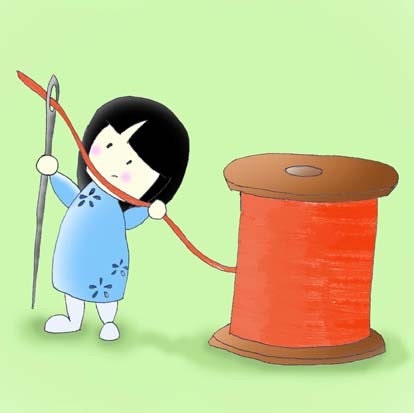In the area of SoHo and Chinatown were many old buildings that housed between 40 - 70 workers on each floor and there are usually around 4 - 10 floors. These floors were massive with the creaky wooden boards buffed and polished to this shiny old yellow color. The windows were usually huge with mismatched curtains of old fabric and there's the constant lull of the buzzing sewing machines, sergers, huge irons and snip snip snip. A rather large and loud system of metal pipes went all along the ceiling circulating and cooling the air. In the back before the steam of the irons were huge metal poles where they would hang the finished clothing on or aka the monkey bars as I would call them.  "Seamstress Necklace" by mylavaliere
"Seamstress Necklace" by mylavaliere
Everybody was assigned to a machine depending on their skills. Some were great at serging and went to the sergers, most were on sewing machines and the men were in the back doing the iron and pressing. The really skilled ones were titled "sample makers" as they were the ones who first make the whole clothing that everyone uses as a plan. They are adept in all aspects of the clothing development and are the go-to person when you have a problem. My mom was one of these. Each machine had a little desk, metal table that housed their belongings like a big jar of water, their purse, snacks, maybe the daily newspaper and each one had their "big scissor" incredibly sharp and able to snip with such fine lines on even the coarsest materials. "Seamstress Necklace" by mylavaliere
"Seamstress Necklace" by mylavaliereEveryday consisted of the "sample maker" and boss arriving at around 8am - 8:30am and everyone else coming at 9am. The mornings are always full of chatter of the daily gossip. From there the machines are warmed up and work until around 12pm where they have lunch. Most of the time there was a fridge, table and a huge rice cooker in the kitchen area. A single bathroom was in it's own room on the other side. The buzzing of the machines would continue until 4pm where people would chip in to get a round of coffee/tea and buns during their break. around 4:20pm they continue until 8 or 9 at night. Though if the contract calls for it they can work until midnight to meet the deadline.
The pay also depended on the contract. Most companies want the lowest price the wages reflected that. A single article of clothing was made of different parts each part was worth a number of cents. A sleeve was maybe a nickel or a dime each, the body was a quarter, a pant leg 15 cents. On average one can finish 45 - 70 clothing depending on their skill and quickness that can range from $40 - $70 a day. About the same as minimum wage back then as now since I'm older I haven't gone to one for a long while so that detail is unclear.
My fondest memories were of making tiny bobbin dolls and sewing little dresses with my needle and thread as my mom and grandma was on the sewing machine. They also had a mannequins that I would pin fabrics to, making my own designs and having the ladies rave about how I should be a designer. I loved the little bit of milk tea and bun during the afternoon breaks as all the machines went quiet and I chatted to the ladies about what I learned at school. I also witnessed the creation of life as the factory cats that protect the cloth from gnawing mice had little kittens. What I learned the most even though I was very young was how hard my mom worked there to provide for the family. Every person there was a father, mother, grandma, grandpa, aunt or uncle that had a family to raise.
Life was tough... in a world that most of them just arrived at looking for a new opportunity for themselves and their children, the factories provided a stable income, a social and cultural haven, human interaction and the means to lift their children so they can reach higher then they could have ever tried. The garment factories were far from perfect but I simply cannot see the horrible nature of "sweatshops" in them.
Until then... Appreciate the hard work of your loved ones...






8 comments:
This is a really interesting look, from the inside and in a radically different way at the whole issue.
thanks pili sometimes I feel people are too quick to judge without really looking at it from all angles.
I enjoyed reading your recollections, I love to catch a glimpse of where people have been and the unique experiences they have had. Great post.
How interesting! It's nice to hear an "insider's" point of view.
great story!! love reading about rich & interesting history!
Very interesting, thanks for sharing!
I really enjoyed reading! I am following your blog! Nice.
I thoroughly enjoyed reading this post. You created just a vivid picture of your life!
Post a Comment